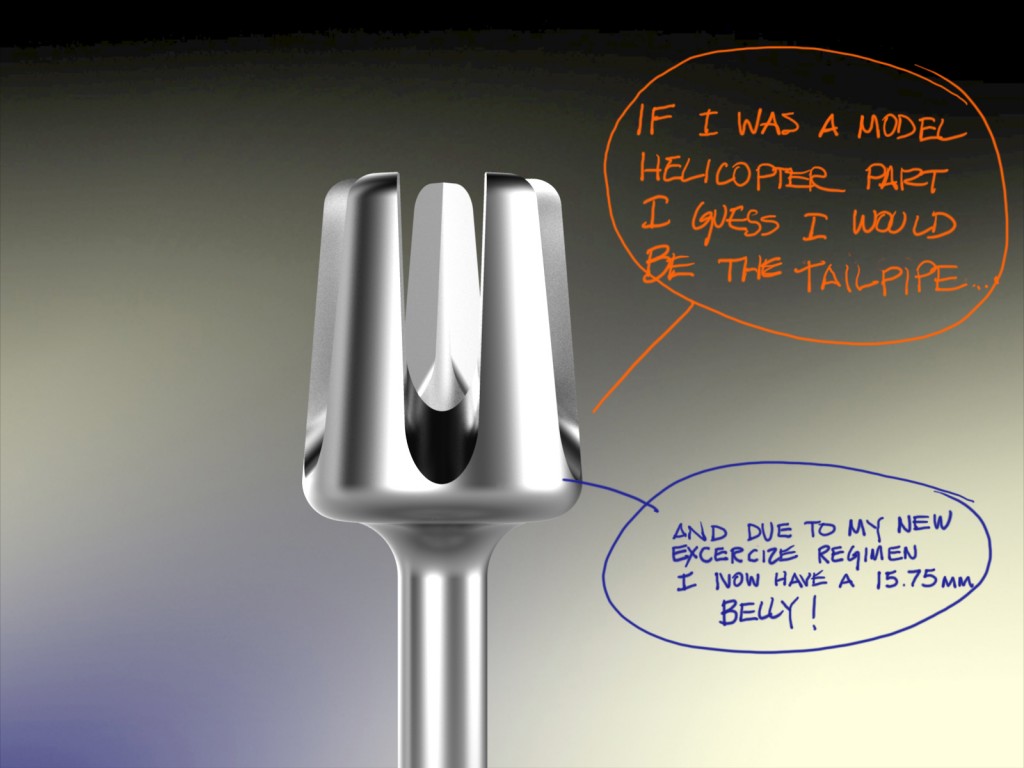This Thursday we announce the CT-17. For a yet to be named totally awesome prize, and just maybe prizes, we are leaking clues that could lead up to the discovery of the identity of the CT-17 prior to Thursday’s announcement. I doubt the prize, or prizes, worth around 100K will be claimed and thankfully will remain unfunded on my end. Why?
This much we know, the winner(s) will share the following traits;
- has nothing better to do than hang out on this worthless blog–this is so sad.
- can’t follow instructions
- understands that CT-17 clues harder than “What is your name?” are extraordinarily difficult.
- right now, at this very minute, should be in the shop making something but is not.
- Probably should not buy the CT-17 until ALL the blog addiction therapy sessions are complete.


Kinda resembles some sort of plug cutter.
That would be too simple!
if this was sharper you could use it for frog hunting. Did you hit a rock to dull it like that?
Cooter
Cooter-
It is not used for frog hunting, hence it is not “dull” by accident–remember, it is a woodworking tool.
–John
.
That stainless “Tulip” above does call out that it spins around.
But my feeling is that there is another counterpart that slips over the tulip part – for a perfect fit. So in that union their function is revealed.
-roger
.
…..and there would be several “counterpart” fittings to choose from -depending on the desired effect or goal.
-roger
Roger,
I like your idea but I would say that the counterpart slides into and not over. So the item shown in the picture would be the “female” end.
.
ok, here’s one more stab – then I gotta get back to work.
The “tool” is essentially an inlay/ decorative dowel maker.
The stainless “Tulip” has five sides.
Each side has that slot with that curved radius thing going on at the bottom – with an outer and inner edge.
The inner radius is actually a plane “iron” like sharp edge.
The reason the “slots” are chamfered outward is to make it easy to hone the edge of each inner radius.
Now,
One is able to take a dowel and pass it through the center of the “Tulip” through the hollow stem.
Thus giving the dowel five inset passes with the reflective radius along the surface of the dowel.
Their would be different size “Tulips” in different gradients.
This part of the tool would be used much in the same way a dowel plate is used.
For the counterpart to each “Tulip” their would be a punch set, so that the crosscut cuttings along this dowel could then be inserted within a workpiece. Or they could be used as decorative dowels for joinery work.
If by tomorrow I’m still agreeing with this concept I’ll explain further the jigs that may have to be constructed to aid in this process.
And if you all think this is goblolly-goosh I’d be open to your interpretation by the close of today before John gives the next clue!
-roger
I’m so glad to see that BCTW is finally releasing a nose-hair trimmer! Now I can finally slice those pesky puppies in style!
– Smithsonian
“I’m so glad to see that BCTW is finally releasing a nose-hair trimmer…”
Peter-
You and Cooter Ditchman need to go camping/smelt fishing/frog hunting in your new safety pants…plenty of time to discuss your information processing skills…
-John
Man! I’m going to start sending Roger obscure pictures of random things to see what he comes up with. He’ll invent a tool a day! They guy’s amazing!
– Peter
I think that piece would mate with another identical part, working like a clutch plate.